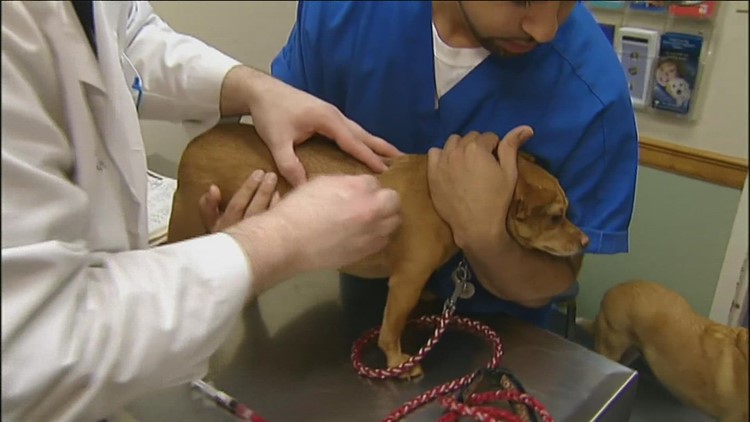CLEVELAND — You might not be the only one who is feeling a little under the weather these days. Your dog could be, too.
Veterinarians across the United States are keeping a close eye on respiratory illnesses -- including canine influenza.
It is highly contagious and is spread from dog to dog.
Southern states have been hit hard, forcing shelters, boarding facilities and doggy daycares to limit operations or temporarily shut down.
According to the CDC, signs of dog flu include:
- Cough
- Fever
- Runny nose
- Lack of appetite
- Eye discharge
- Fatigue, and low energy
"The nasal, the ocular drainage, the cough is one of the biggest things that we see. But it can progress to them really feeling poorly and not doing well, and we always say, if it looks off, get them checked out," said Dr. Jimmy Davis, a Texas veterinarian.
If you notice changes in the color of your dog's gums, if they have labored breathing and can't seem to catch their breath, you should call your vet right away.
Fortunately, most cases are mild and usually subside in about a week or two.
What dogs are at greatest risk for canine influenza? Well, if your pup is a social butterfly, that might increase their odds of getting sick. Dog parks, traveling with you out of state and any place they might come into contact with other dogs outside your home could do it. Just like humans!
And just like humans, there is also a flu shot for dogs. It can help stop the spread -- or at the very least, lessen the severity of symptoms. Worth talking to your vet if you are concerned.
If you are worried about catching the flu from your dog -- don't be. According to the CDC, there has not been a single reported case of human infection with a canine influenza virus in the U.S. or worldwide.
Editor's note: Video in the player above was originally published in a previous story on Dec. 7, 2022.



